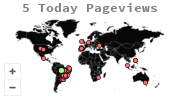Impacts of Firms’ Internal Information Environment on Tax Avoidance (Case Study: Companies Listed In Tehran’s Stock Exchange)
DOI:
https://doi.org/10.20946/rad.v19i0.31985Keywords:
Quality of Internal Information, Tax Avoidance, Geographic Dispersion, Commercial Dispersion.Abstract
The main purpose of this study is to investigate the impacts of firms’ internal information environment on tax avoidance. The research method includes a data panel and is generally of semi-experimental fashion. The population of research is consisted of the entire companies and firms listed in Tehran’s stock exchange as 496 firms from the beginning of 2007 until the end of financial year of 2014. Among the population, a number of 86 firms were selected as the sample through systematic omitting method. For the purpose of data analysis, the tests of T and multivariate linear regression were incorporated into the study. Results indicate that impact of quality of internal information on tax avoidance is higher in those companies in which information play a more important role. Firms which operate under geographic dispersion make more use of the quality of their internal information, because this information helps them towards reduced tax avoidance. High quality of internal information and commercial dispersion force these firms towards avoiding larger taxes. In addition, quality of internal information is not effective on firms which are under reconstruction status.
Downloads
Published
How to Cite
Issue
Section
License
Authors who publish in this journal agree to the following terms:
1. Authors retain the copyright and grant the journal the right of first publication, with the work licensed simultaneously under a Creative Commons Attribution License after publication, allowing the sharing of work with acknowledgment of the authorship of the work and initial publication in this journal.
2. Authors are authorized to take additional contracts separately, for non-exclusive distribution of the version of the work published in this journal (eg publish in institutional repository or as a book chapter), with acknowledgment of authorship and initial publication in this journal.
3. Authors are allowed and encouraged to publish and distribute their work online (eg in institutional repositories or on their personal page) at any point before or during the editorial process, as this can generate productive changes, as well as increase the and the citation of the published work (See The Effect of Free Access).








